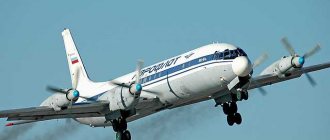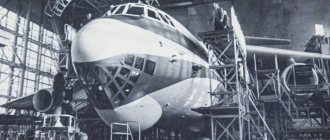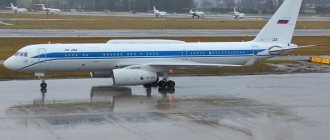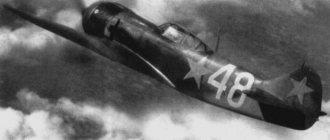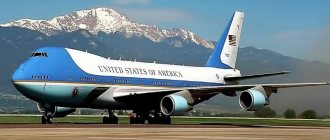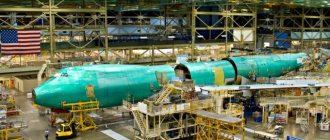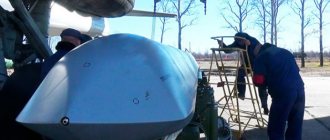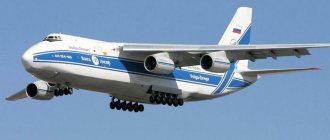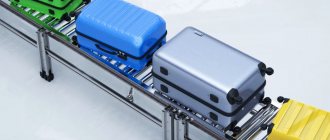Swan XII
Developer: Lebedev
Country Russia
First flight: 1915
Type: Reconnaissance aircraft
It is known how high the need of Russian aviation for powerful engines was. To some extent, engines solved this problem. To Russia, 9-cylinder radial water-cooled engines with a power of 130 hp. began to arrive in connection with the development of Voisin aircraft. However, already at the beginning of 1915, supplies stopped. The consolation was the opening of a branch of the company in Moscow, where engines were assembled from imported parts. In general, despite the large mass, extensive detail, and complexity of repairs, the Salmsons were assessed positively. The advantages included reliability, significant service life, low fuel and oil consumption. In any case, whether Salmson was good or bad, it became the only engine of such power produced in Russia. It’s no wonder that it was Lebedev who installed it on the next rework of the Albatross. The changes, it must be said, were minor and concerned primarily the propeller-engine group. The bearing surface of the wings with a span of 13.15 m was 42 m2, the take-off weight of the device exceeded 800 kg.
Tests of the first prototype of the aircraft, designated "Swan-XII", began on December 28, 1915. They were conducted by the pilot of the Grenadier Corps Aviation Squad, Lieutenant Sleptsov, who was sent from the front for this occasion. The next day, he telegraphed to the August Head of Aviation and Aeronautics in the army, Grand Duke Alexander Mikhailovich: “Swan-XII” with a Salmson engine is better than all existing airplanes. immediate order for combat testing is required.” Subsequently, during factory tests, a speed of 120 km/h was achieved; with a payload of 350 kg, the aircraft climbed to an altitude of 2000 m in 22 minutes. The rigid installation of the engine and the absence of vibrations were noted as a positive phenomenon. It turned out that the “Swan-XII”, in comparison with the German “Albatross”, has a greater “volatility reserve at 700 engine revolutions” (idle throttle), the flight characteristics of the aircraft have improved, but the forces on the stick have increased, and measures should have been taken to reduce them. In order to eliminate other discovered deficiencies, Sleptsov recommended remaking the exhaust pipes so that the latter do not enter the cabin; increase the canopy of the pilot's cabin; supply armor for the pilot and observer. Lebedev promised the Grand Duke that the payload of the new aircraft would be 50 kg more than that of the French Voisin, and that the next prototype would be equipped with two machine gun mounts.
The tests had to be interrupted due to bad weather, and to continue them, the experimental aircraft was sent by rail, first to Kyiv, and then to Odessa, where Lebed-XII arrived on February 11, 1916. After 4 days, a test flight was made, after which the plane overturned while taxiing around the airfield. The repair required two weeks, and it could have been done on the spot, but Lebedev, fearing competition, demanded that the car be returned to Petrograd. Two months later, in May 1916, without waiting for the test results, Grand Duke Alexander Mikhailovich sent a request to the Lebedev plant about the fate of the experimental airplane. It turned out that the plane was not repaired, but a new one was built, somewhat different from the previous one, and tests were going to begin in June.
Flights on the second experimental Lebed-XII (factory No. 457) were able to begin a month late, but already on July 31, the pilot of the 13th KAO, Lieutenant Barbas, went on it from Petrograd to the front. The flight to Pskov took three and a half hours. The engine worked well, and the airplane as a whole did not cause any complaints. Having replenished the fuel supply, Barbas took a new map and soon flew to Dvinsk, where he arrived 2 hours 20 minutes later. The pilot's overall impression of the new aircraft was good. The only drawback he noted was that “the device pulls downwards in flight, you have to hold it with the control stick.”
Back in March 1916, taking into account Sleptsov’s generally positive conclusion, Joint Stock Company “V. A. Lebedev" provided the Main Military-Technical Department with detailed drawings and a description of the aircraft for the final decision. A payload of 300 kg was guaranteed, a climb of 2000 m in 25 minutes, a ceiling of 3,500 m. The decision was made positive, and on April 19, 1916 GVTU signed a contract for the supply of 225 aircraft of the Lebed-XI type. According to its terms, the plant supplied airplanes without engines and propellers at a price of 13,500 rubles. for the device, plus a set of spare parts for 6800 rubles. The total order amount was RUB 5,153,500. The aircraft were to be built mainly from Russian materials, but some things, including instruments and equipment, were allowed to be purchased abroad, based on the calculation of 3,000 rubles. gold for one device. Salmson engines with a cooling system and propellers were supplied by the military department. After signing the contract, the Company was paid an advance in the amount of 15% of the total amount, the customer was going to transfer the next 15% after certification that the initial amount was spent for its intended purpose. The aircraft were to be delivered in batches of 20-25 units as they were ready. The final deadline for the contract was set at March 31, 1917.
The first batch of Lebed-XII aircraft was presented for delivery in the second half of the summer of 1916. The aircraft were equipped with Salmson engines of 140 and 150 liters. The use of more powerful and heavier engines caused problems with the alignment of the airplanes and required an increase in the radiator area. Tests began at the Komendantsky airfield on August 4, when factory pilot Mikhailov took into the air the first production Lebed-XII (No.444) with a 150 hp engine. With. The vehicle's armament consisted of a Colt machine gun mounted on a turret mount designed by Shkulnik and 50 kg of bombs. On October 4, the crew, consisting of factory pilot Goncharov and military observer pilot Lieutenant Korvin-Krukovsky, carried out a flight to determine the performance characteristics of this aircraft. With a total load of 350 kg, the lift-off speed was 80 km/h, and the maximum was 139.7 km/h. The following climb times were obtained: 1000 m - 8.5 minutes, 1500 m - 14 minutes, 2000 m - 22 minutes, 2500 m - 34.5 minutes, 3400 m (ceiling) - 41 minutes. After landing, the airplane ran about 100m. On the same day, tests began on the training version of the Lebed-XII (No.399), equipped with a 140 hp engine. In the first flight, the aircraft controls were only in the rear cockpit; later they were installed in the front cockpit.
In October, thanks to good weather, almost the entire range of tests was carried out and the first batch of 10 devices was delivered. In addition to the aviators mentioned above, military pilots Staff Captains Zhokhov, Mordakh, Yablonsky, Lieutenant Kalashnikov and Second Lieutenant Lerche took part in the work. They concluded that the device “has excess weight,” insufficient ceiling and payload, “has a tendency to dive, hangs on the handle, but is safe.” In general, the test commission, in a report dated October 10, recognized that the Lebed-XII is suitable for use as a near rear reconnaissance aircraft with a maximum permissible load of no more than 300 kg. In mid-October, a number of changes were made to the aircraft design. First of all, the upper wing was moved forward by 35 mm, its installation angle was increased by 1-10″, the front spar was raised by 14 mm, and the stabilizer was installed parallel to the engine axis. Device No.444 underwent modifications, and after its flight, the testers came to the conclusion that the tendency for the nose to lower was eliminated. On the same vehicle, an attempt was made to get rid of exhaust gases from entering the cockpit. To do this, the design of the exhaust pipes was slightly changed and “additional vents were installed in the hood and body of the device.”
Until the end of 1916, Lebed-XII was manufactured with serial numbers: 325, 399, 442-445, 447-458, 465, 467-469, 471, 472, 479, 481-495. Sending to the front proceeded slowly, despite the acute shortage of aircraft in the air squadrons. So, on January 1, 1917, there were only six Lebed-XIIs in the active army (all on the Northern Front in the 12th Air Division) and one more was stored in the 4th Air Fleet. Most of the aircraft were built in 1917. These are cars with numbers: 439-441, 465-466, 469-471, 473-478, 480-483, 485-513, 515-535, 537-540, 542-582, 585-590, 592, 595-663 , 666, 667, 670-675, 678-682, 686, 687, 689-691, 694, 699-701, 704, 714, 722. As you can see, some of the numbers are repeated, in addition, their total number exceeds the number built according to contract with the State Technical University "Lebed-XII" (in total, during this period 216 airplanes of this type were produced, of which 192 were delivered). This discrepancy is explained simply: sometimes, under the designation “Swan-XII”, devices from among those repaired and restored were handed over to the treasury. Another 20 Lebed-XIIs were ordered from the Slyusarenko plant, where the aircraft with factory No. 444 was transferred as a sample. However, only 4 cars were built at this enterprise.
"Lebed-XII" entered service with the 1st, 5th, 10th and 12th air divisions in the following air squadrons: 10, 13, 15, 23, 25, 29, 33 and 38 corps and 5 army. These aircraft carried out reconnaissance of the enemy's near rear, photographing and bombing their positions, and correcting Russian artillery fire. The command hoped that Lebed-XII would replace the outdated Voisin, which the pilots nicknamed “flying barbed wire.” However, for all its shortcomings, this airplane with a trough-shaped gondola was extremely durable, tenacious, reliable and earned a very good reputation. Which, alas, did not happen with Swan-XII. At the front, it turned out that, despite the measures taken, the characteristic shortcomings of the aircraft (the tendency to dive and exhaust gases entering the cockpit) remained. Moreover, it must be assumed that during serial production these defects even worsened, which caused 7 flight accidents, including fires due to the suction of hot exhaust gases into the gap between the lower wing and the fuselage.
Front-line operation quickly revealed the shortcomings of the Lebed-XII’s weapons. Initially, the aircraft was equipped with four cylindrical “bomb throwers” of the engineer Shkulnik’s system. However, these devices, made of birch plywood with a length of 640 mm and a diameter of 193 mm, quickly failed in field conditions - they warped and came apart, which is why bombs got stuck in them. In February 1917, the bomb releasers of engineer L. D. Kolpakov-Miroshnichenko were successfully tested. With their help, the bombs of Captain Oranovsky’s system were suspended under the fuselage near the center of gravity of the aircraft in the following order: two pound ones - at the edges (total weight -32.76 kg), two twenty-pounders - in the middle (total weight - 16.4 kg)
While the bomb weapon system was improved, the problems with the machine gun were never completely resolved. Most often, the Lebed-XII was equipped with a Colt machine gun, mounted in the observer’s cabin on the installations of the same Shkulnik or Kolpakov-Miroshnichenko. And here the development of the first author suffered from significant drawbacks: the machine gun had difficulty moving around the ring, the design itself was insufficiently strong Military receiver on At the Lebedev plant, Second Lieutenant Lavrov reported to the WWF Directorate that “Kolpakov’s installations are much more reliable, more convenient and better in all respects.” However, the release of both of them continued. Front-line pilots repeatedly turned to Lebedev with proposals to arm the Lebed-XII with a synchronized machine gun. Such work was carried out at the plant, Kolpakov developed a synchronizer, it was built, but things did not go any further.
The shortcomings of the weapons, the low speed and maneuverability of the Lebed-XII for 1917, put the crews of these aircraft in a difficult position when meeting with German fighters. Thus, on October 1, 1917, pilot senior non-commissioned officer Tarasov and observer Lieutenant Klobukov from the 33rd KAO were attacked by a German airplane. Soon the Russian aircraft was shot down, but the pilot managed to land it in the location of his troops. “The Lebed plane is out of action. The pilots are alive,” Colonel Kuznetsov, head of the 1st Air Division, reported to army headquarters.
Accidents and fires of the Lebed-XII aircraft, which occurred due to design flaws, forced a temporary stop to the supply of aircraft squadrons with aircraft of this type. In June 1917, a special commission was created under the chairmanship of Professor Georgy Botezat, which included front-line pilots Warrant Officer Bazilevich-Knyazhkovsky from 29th KAO and Lieutenant Levchenko from the 13th KAO. The commission’s conclusions after the test flights were disappointing: “It is impossible to improve the Lebed-XII aircraft, sending them to the front is undesirable, these aircraft can only be used as training aircraft in flying schools. The training version of the aircraft has even worse data, is dangerous and is unsuitable for flying in flying schools.”
Factory pilots A. Goncharov and V. Mikhailov, engineers L. Shkulnik and L. Kolpakov, in a special act dated July 6, 1917, expressed disagreement with the conclusions of the special commission. They believed that inexperienced pilots worked there, and the commission’s conclusions were subjective. Each of the factory pilots logged 250 hours on the Lebed-XII, both of them tested 160 aircraft of this type, and, in their opinion, the machine was a good reconnaissance aircraft with minor, easily eliminated shortcomings. Naturally, Lebedev himself shared the opinion of his employees.
To resolve controversial issues, another commission was created from representatives of front-line pilots, instructors of the Gatchina aviation school, the Directorate of the Air Force and the Lebedev plant, which, by an act dated October 2, 1917, confirmed the unsuitability of the Lebed-XII aircraft as an obsolete type with a low payload capacity , insufficient speed, having a number of design flaws in the fuel and cooling systems of the engine. The conclusion of this commission about the aircraft was unequivocal - “further construction is undesirable.”
After this, the production of Swan-XII was significantly reduced. Proposals were made to remove these aircraft from the front and transfer them to training status. However, in conditions of an acute shortage of aviation equipment, the vehicles remained in the active army. In addition, the training version was used at the aviation school of the Imperial All-Russian Aero Club (NoNo 442, 449, 450); Gatchina Military Aviation School (NoNo 399, 439, 456, 466); at the school of the Moscow Aeronautics Society (NoNo 446, 452, 454); Odessa Aviation School (NoNo. 448 and 455); Kyiv School of Observer Pilots (No. No. 447 and 458) and Caucasus Aviation School (No. No. 451, 453 and 480). More than 50 Lebed-XII aircraft were delivered in the second half of 1917 to the Air Combat School in Krasnoye Selo by order of the Naval Department, some of them were equipped with dual controls.
Interesting conclusions were already made by the Soviet commission, created by order of the head of the WWF Directorate for comparative tests of the Lebed-XII, Anasal and Farman-XXX aircraft, which took place from October 31 to November 20, 1917 at the Main Airfield. The commission noted the strength and thoroughness of the design of the Lebed-XII reconnaissance aircraft and its motor installation, convenient maintenance of the device, good visibility and firing from side to side (firing sector up to 200o).
The stability and controllability of the aircraft were considered satisfactory. True, it was indicated that Lebed-XII has a tendency to dive during descent. The disadvantages noted were the small payload, insufficient ceiling and speed, and excessively long takeoff and mileage. The machine gun mount was considered inconvenient. It was also noted that forward shooting is only possible at an upward angle. The production of aircraft continued, and in 1918 the last 24 Lebed-XIIs were delivered.
After the collapse of the front, individual copies of the Lebed-XII ended up in the hands of anyone. So, in 1918, one such aircraft in Odessa went to the Poles, from whom it was expropriated by Austrian troops. In the Red Army at the beginning of the same year, several Lebed-XIIs were in S.E. Stolyarsky’s group, which operated north of Petrograd in the area of Narva and Revel. In 1919, this unit, called the Saratov Hydrodetachment, used the Swans on the Northwestern Front. Winter 1918-19 machines of this type were operated in the Northern hydraulic detachment, operating over the Northern Dvina. "Swan-XII" was also in service with the 2nd Petrograd Air Group, the Belomorsk Hydroavian Squadron, the 1st Socialist, 3rd Separate Marine, 3rd Latvian Aviation Squadron and some other units. A small number of Swan-XIIs ended up with the Whites. Thus, in the aviation of the army of Admiral A.V. Kolchak there were only two such aircraft: in the 5th and 6th air squadrons (NoNo 585 and 535). In the Soviet republics, limited use of the Lebed-XII continued into the early 1920s. It is known that in 1925 one of these devices flew to Baku. The plane was received from Zakaviakhim, repaired, and then used for agitation and propaganda, including giving rides to activists and labor shock workers.
During serial production at the Company's plant, attempts were made to eliminate the shortcomings of Lebed-XII. One of the aircraft was equipped with a large propeller spinner and an exhaust manifold with gas outlet above the upper wing.
Such devices were obviously not built in the series. Attempts were made to install other engines on the aircraft. Thus, one car was equipped with a Hispano-Suiza engine with a power of 140 hp, and another with a Green engine with a power of 120 hp. A number of sources call these devices “Swan-XII bis”. However, these aircraft could just as easily be called “Lebed-XI”, because, as already noted, sometimes repaired and restored aircraft were handed over to the treasury under the designation “Lebed-XII”.
Brief technical description of the Lebed-XII aircraft.
Lebed-XII was a two-seat, two-strut biplane used as a reconnaissance aircraft and light bomber.
The fuselage is wooden, rectangular in cross-section, assembled from four spars with a cross-section of 30×30 mm and frames. Plywood sheathing: up to 3 mm thick in the bow, 2 mm and 1.5 mm in the tail. The sheathing was secured with screws, nails and wood glue. The crew was located immediately behind the engine. The pilot's seat was made of plywood or wicker (reed or willow twigs). The pilot-observer's seat is a transverse board. The cabin of the letnab is edged with a wooden ring, which serves as the basis for a machine gun turret.
The wings are two-spar, without a center section, with a thin, strongly concave profile. The power set is wooden (pine). Every 3-4 ribs, wooden spacers were placed between the spars, and the entire wing frame was reinforced with guy wires with a diameter of 2.5-3 mm. The wings were covered with light-colored fabric and then coated with dope. Ailerons (“wings”) were available only on the upper wing. To ensure the necessary rigidity, they were made with a fracture. The ailerons were made from metal pipes, however, like the tail, they could be made of wood. The wing box was braced with single cables with a diameter of 5-6 mm.
The tail unit is flat, welded from steel pipes 30x28 and 25x23, covered with fabric. According to the technical description (Moscow, 1919), it could be made of wood. When transporting the aircraft, the tail could be folded.
The power plant included a water-cooled Salmson engine (140-150 hp were used on production vehicles). The partially hooded engine was mounted on a rigid sub-engine frame made of steel pipes. The engine cylinders were covered on top with water jackets made of red copper. The main gas tank (capacity - 210 liters) was made from the same material, which was located in the cockpit under the pilot's seat. An oil tank with a capacity of 24 liters, a consumable gas tank and an expansion tank for the cooling system, which was installed above the engine hood, were made of red copper or brass. Most Lebed-XIIs have a supply tank with a capacity of 60 liters. was installed in the fuselage, behind the pilot's back, but there were machines on which such a tank of smaller capacity (20 liters) was located between the hog struts under the upper wing. The tanks were not painted and had an oxidation color that appeared as they were used. Increased pressure in the gas tank was created using a hand pump or a windmill mounted on the rear left strut of the chassis. The radiators of the cooling system are tubular “Hazet” type, installed in blocks along the sides of the fuselage. In winter, some of the radiator sections were removed. The propeller is of the “Integral” type with a diameter of 2700 mm and a pitch of 1900 mm.
The chassis is standard for the time. V-shaped posts were made from teardrop-shaped steel pipes, which were stuffed with wood to increase strength. Wheels 760×100 mm (spoked and with a rigid rim were used) were placed on a steel axle. Cushioning - rubber, corded.
Armament. On the turrets of the Shkulnik or Kolpakov-Miroshnichenko systems, a 7.62-mm Colt machine gun was installed, designed to protect the rear hemisphere. Using bomb racks from the same authors, the aircraft could carry up to 50 kg of bombs.
| LTH: |
| Modification | Lebed-XII |
| Wingspan, m | |
| upper | 13.15 |
| lower | 12.00 |
| Length, m | 7.96 |
| Height, m | 3.25 |
| Wing area, m2 | 42.00 |
| Weight, kg | |
| empty plane | 820 |
| normal takeoff | 1212 |
| maximum takeoff | 1350 |
| engine's type | 1 PD Salmson |
| Power, hp | 1 x 150 |
| Maximum speed, km/h | 135 |
| Cruising speed, km/h | 118 |
| Flight duration, hours min | 3.00 |
| Rate of climb, m/min | 125 |
| Practical ceiling, m | 3500 |
| Crew, people | 2 |
| Weapons: | one 7.7 mm machine gun |
View the embedded image gallery online at: https://xn--80ada7afn3b.xn--p1ai/ucheba-samoljoty?start%3D50#sigProId9c0d39d5a7
List of sources:
Aviation and Time. Mikhail Maslov, Victor Kulikov. “Swan-XII” and other “Albatrosses” by V. A. Lebedev. A. O. Alexandrov. Aircraft of domestic design. Mikhail Maslov. Russian aircraft 1914-1917. A. Alexandrov, G. Petrov. Winged prisoners of Russia. Shavrov V. B. History of aircraft designs in the USSR until 1938.
